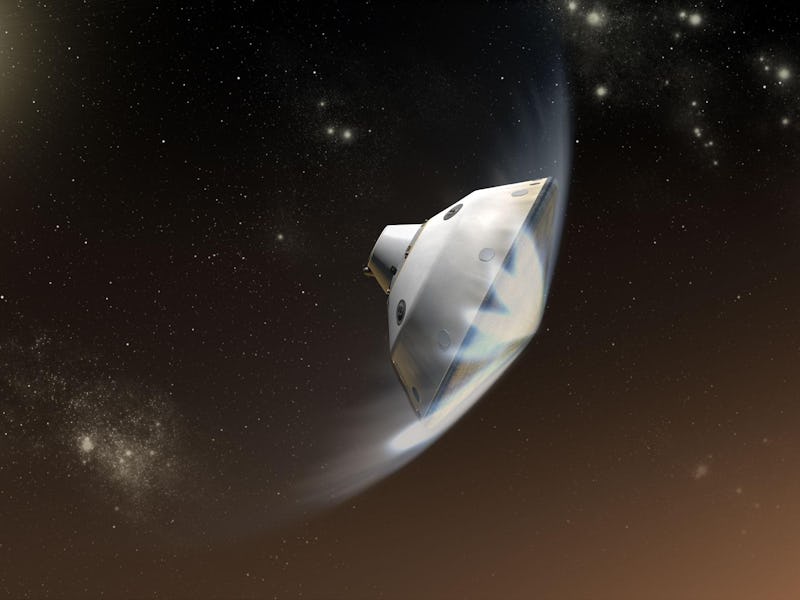NASA Still Doesn’t Know Why the Mars 2020 Mission Shield Cracked
It's a worrying mystery.

NASA’s upcoming Mars mission suffered a setback after the heat shield of the Mars rover cracked. The space agency says the shield fracture won’t change the 2020 launch date but it does raise serious questions about what caused the rover’s structural damage.
The rover’s head shield split while being tested in Denver on April 12, according to a NASA statement released Thursday. The test, which was being conducted by agency contractor Lockheed Martin Space, was meant to subject the shield to forces up to 20 percent greater than what NASA anticipates when it eventually enters in the Martian atmosphere. The broken shield, NASA admits, was a surprise.
Artist's concept of the Mars Science Laboratory entry into the Martian atmosphere
Join our private Dope Space Pics group on Facebook for more strange wonder.
“While the fracture was unexpected, it represents why spaceflight hardware is tested in advance so that design changes or fixes can be implemented prior to launch,” the agency states. The heat shield is part of a thermal protection system that was originally tested in 2008 and passed with flying colors. It was one of two heat shields developed for the Mars Science Laboratory mission, which successfully landed the Curiosity rover in August 2012. It was in top shape then, but that was almost six years ago.
The heat shield is integral to new, improved, and souped-up rover and was meant to be the vehicle’s best defense against intense atmospheric heat on the Red Planet. NASA says the Jet Propulsion Laboratory in Pasadena, California will now work with Lockheed Martin Space to investigate the surprise breakage, and decide whether any design changes need to be incorporated into its replacement.
Despite a worrying investigation underway, NASA claims it won’t slow the mission down too much. The launch is still scheduled for July 17, 2020. A new heat shield is expected to be finished by next year, hopefully with better insights as to why the current one cracked under pressure.
The rover is meant to collect a heap of new data from the Martian surface — not to mention look for extraterrestrial life — but now lacks the protection to withstand the heat from entering the planet’s atmosphere. While NASA’s statement is optimistic, a faulty heat shield could yield disastrous consequences if the investigation remains inconclusive.